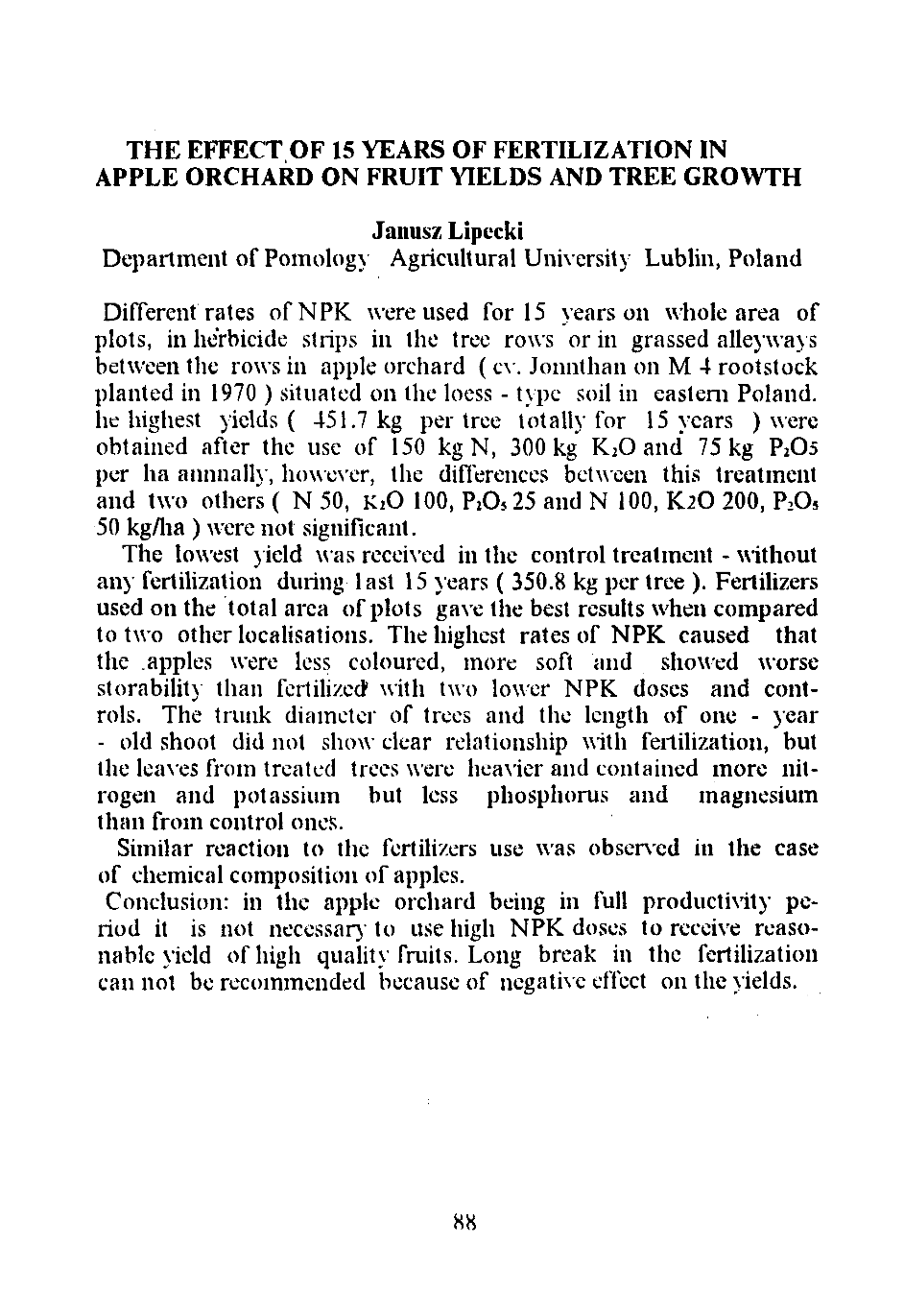

THE EFFECT OF 15 YEARS OF FERTILIZATION IN
APPLE ORCHARD ON FRUIT YIELDS AND TREE GROWTH
Janusz Lipccki
Department of Pomology Agricultural University Lublin, Poland
Different rates ofNPK were used for 15 years on whole area of
plots, in herbicide strips in the tree rows or in grassed alleyways
between the rows in apple orchard ( cv. Joimthan on M 4 rootstock
planted in 1970 ) situated on the loess - type soil in eastern Poland,
he highest yields ( 451.7 kg per tree totally for 15 years ) were
obtained after the use of 150 kg N, 300 kg K20 and 75 kg Р20з
per ha annnalh, however, the differences between this treatment
and two others ( N 50, K20 100,
P2O5
25 and N 100, K
2
O 200,
P2O5
50 kg/ha ) were not significant.
The lowest yield was received in the control treatment - without
any fertilization during last 15 years ( 350.8 kg per tree ). Fertilizers
used on the total area of plots gave the best results when compared
to two other localisations. The highest rates of NPK caused that
the apples were less coloured, more soft and showed worse
storability than fertilized with two lower NPK doses and cont
rols. The trunk diameter of trees and the length of one - year
- old shoot did not show* clear relationship with fertilization, but
the leaves from treated trees were heavier and contained more nit
rogen and potassium but less phosphorus and magnesium
than from control ones.
Similar reaction to the fertilizers use was observed in the case
of chemical composition of apples.
Conclusion: in the apple orchard being in full productivity pe
riod it is not necessary to use high NPK doses to receive reaso
nable yield of high quality fruits. Long break in the fertilization
can not be recommended because of negative effect on the yields.
88
Научная электронная библиотека ЦНСХБ









